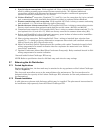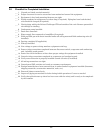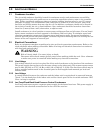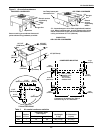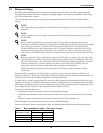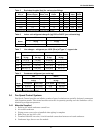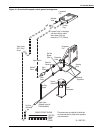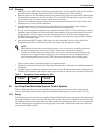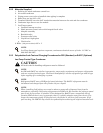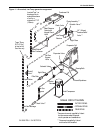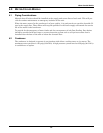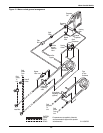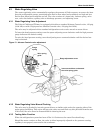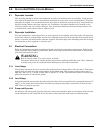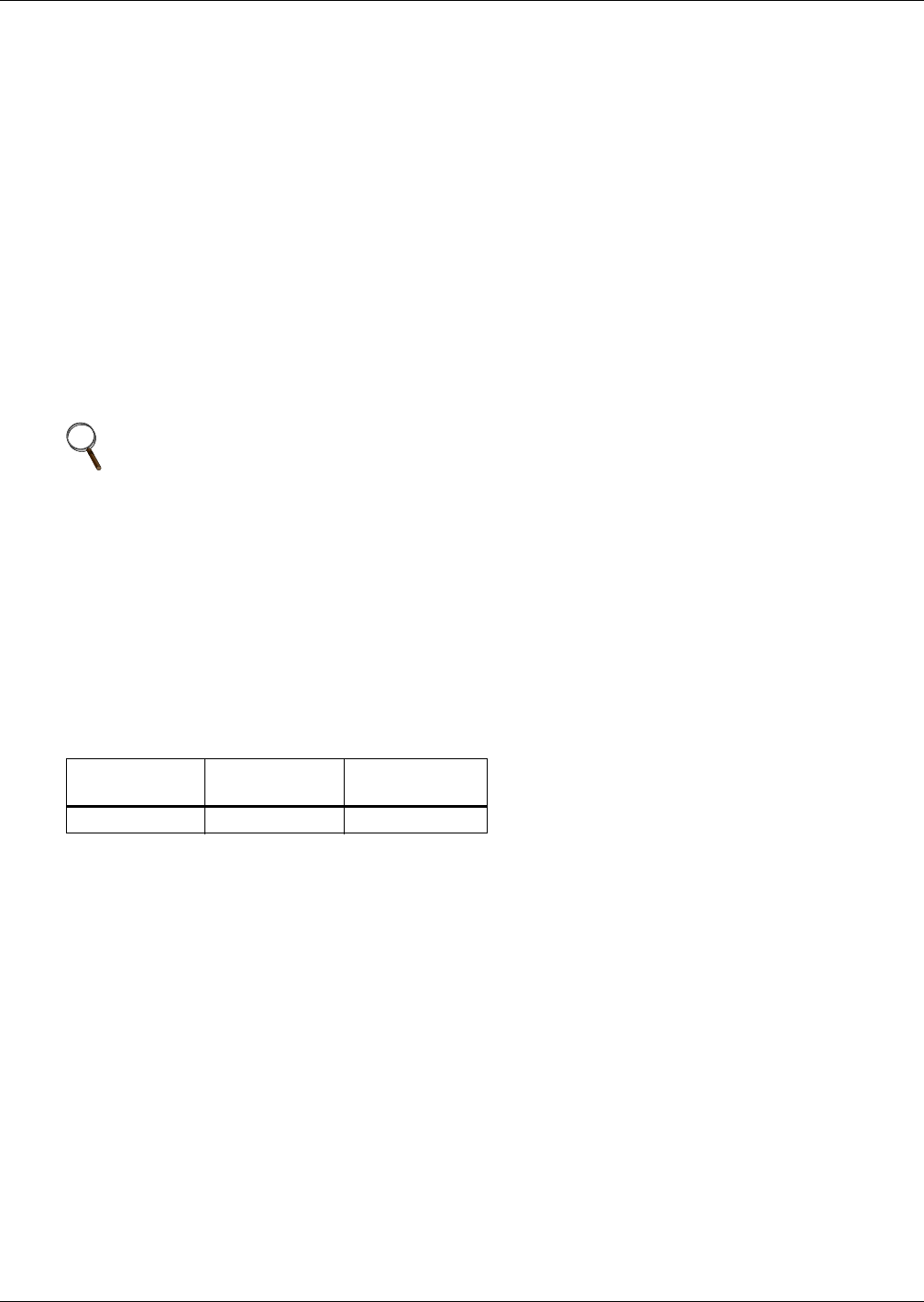
Air-Cooled Models
20
3.4.3 Charging
1. Make sure unit is OFF. Open all disconnect switches and, on units supplied with circuit breakers,
open all breakers. Replace all fuses for the Fan and Compressors or close breakers.
2. Remove jumper on the Fan Safety Switch and reconnect the system wire connections. Ensure that
all operational components are clear of debris. Turn unit ON. (Fan operation is required.) Check
the evaporator fan for proper rotation and correct if necessary.
3. Connect the refrigerant gauge charging hose to the drum of refrigerant and to the suction and
discharge service valves of the compressor.
4. Calculate the amount of charge for the system. Weigh in as much of the system charge as
possible. Refer to the unit, condenser and refrigerant line charge tables.
5. Set the control temperature setpoint (see operation manual) to 60°F (15°C) and set the % relative
humidity setpoint higher than the conditioned room ambient to ensure that solenoid valves and
hot gas bypass valves are open during the charging procedure. You may have to bypass the
LP Switch (low pressure switch) to start the compressors and stop short cycling. Reset the Head
Pressure switch(es) if open.
6. Add refrigerant (R407C liquid, or R22 vapor per unit nameplate) to the suction side of the
compressor until there is sufficient pressure to energize the low-pressure switch.
Then you may remove the manual bypass you applied earlier.
7. Charge the unit until the liquid line sight glass becomes clear. Then add one additional pound of
refrigerant.
8. As head pressure builds, the condenser fan starts rotating. The fan becomes fully energized when
sufficient head pressure is developed. (Fan starts to rotate at 190 psi and is full speed at 250 psi.)
3.5 Lee-Temp/Flood Back Head Pressure Control Systems
The Lee-Temp system consists of a modulating type head pressure control valve and insulated
receiver with heater pad to ensure operation at ambient temperatures as low as -30°F (-34.4°C).
3.5.1 Piping
Lee-Temp systems have two factory-supplied, field-installed check valves: one on the discharge side of
the scroll compressor and one on the inlet side of the receiver. Be sure to install the check valves with
the refrigerant flow in the proper direction. When soldering or brazing the valves, it is very important
that the internal parts be protected by wrapping the valve with a damp cloth to keep the valve tem-
perature below 250°F (121°C).
NOTE
When adding refrigerant to an operating system, it may be necessary to add the refrigerant
through the compressor suction service valve. Because the refrigerant leaving the
refrigerant cylinder must be in a liquid state, care must be exercised to avoid damage to the
compressor. It is suggested that a sight glass be connected between the charging hose and
the compressor suction service valve. This will permit adjustment of the cylinder hand
valve so that liquid can leave the cylinder while allowing vapor to enter the compressor.
Table 9 Refrigerant control settings psi (kPa)
Low Pressure
Cut Out
Low Pressure
Cut In
High Pressure
Cut Out
20 (137.9) 65 (448.2) 360 (2482)



